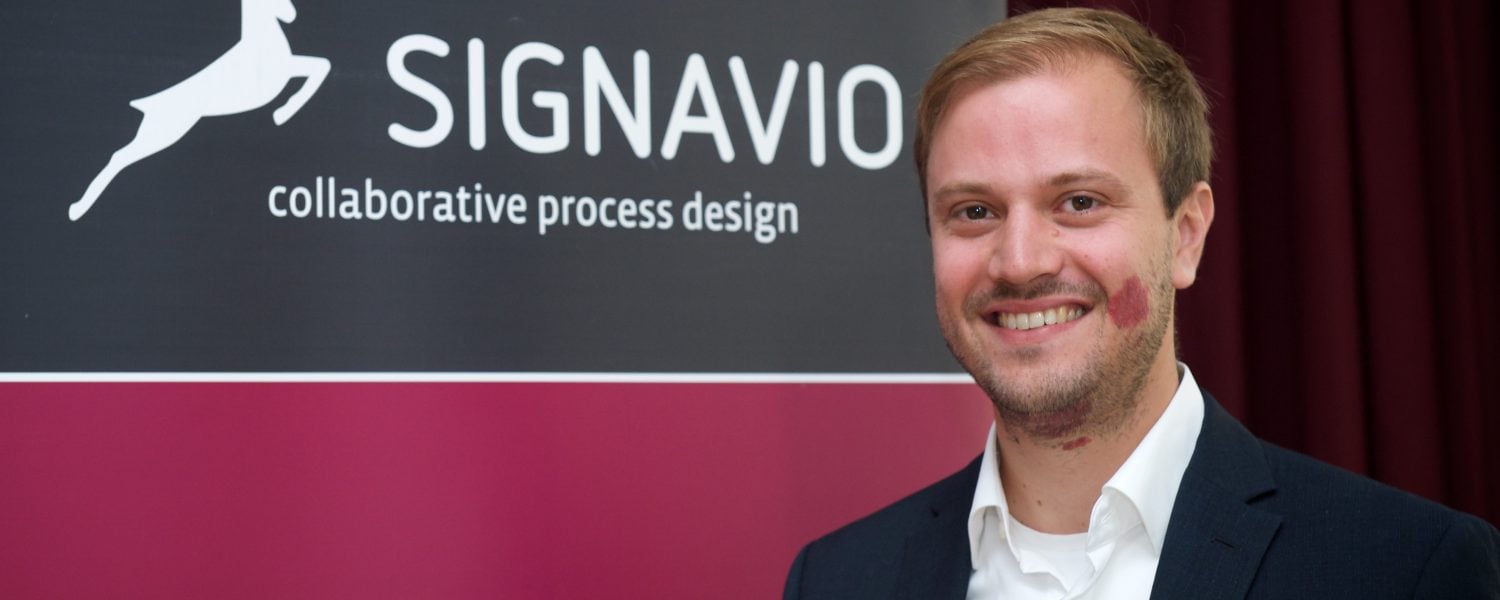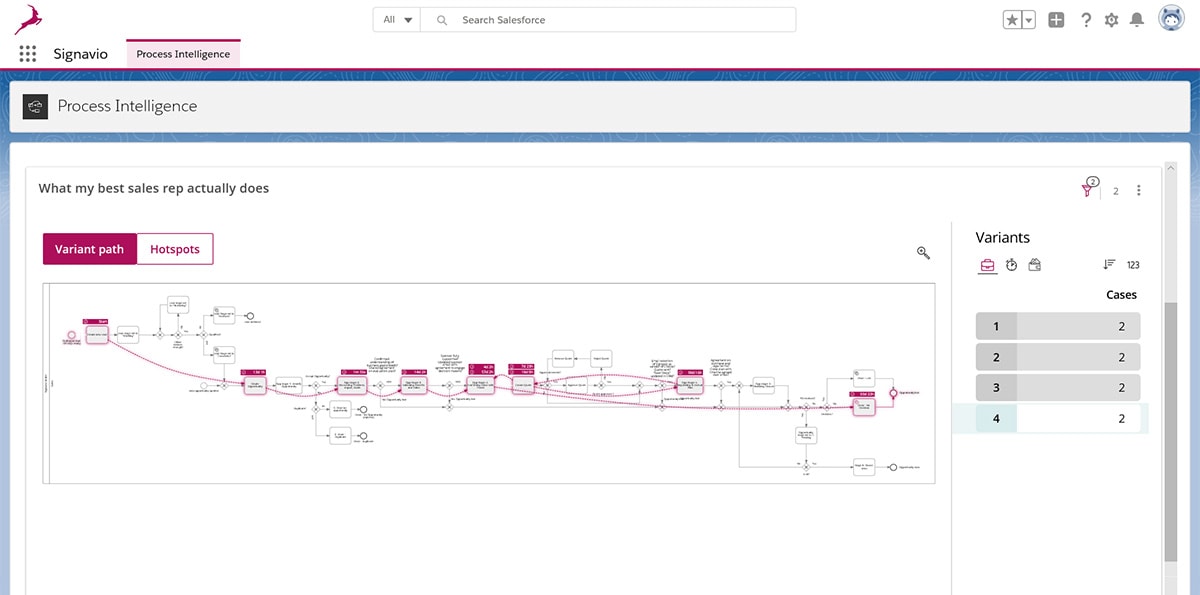Developers’ point: Signavio
developers point end-users cornerAn interview with Gero Decker
Signavio offers a full-fledged software suite for process management and analytics, including a novel, cloud-based process intelligence platform. Gero Decker, founder and CEO, illustrates the evolution of the software company and shares with us his experience with process mining.
How was Signavio born?

It all started in 2006 as a student project at Hasso-Plattner-Institute in Potsdam, Germany. We were fascinated by the potentials of new browsers and the web technology in general, so wanted to try something that nobody had done before: Build a browser-based drawing tool, like Visio or Powerpoint, on the web. And as we were part of the Business Process Technology group of Prof Weske, the most logical thing was to focus on the (then) upcoming BPMN standard.
Two years later, we still had a lot of fun working on this Open Source project, Oryx and the first users from industry gave us great feedback. When my PhD came to an end and the key contributors were nearing the end of their Master's degrees, founding a company was the most obvious thing to do to keep the technology alive and be able to continue working on it.
What was the greatest challenge when moving from a university spin-off to a world-class software company?
I think we were lucky in the sense that we had very different interests and strengths among the founders, although we were all software engineers by background. Nico and Willi loved programming day and night, I loved getting out there and interacting with customers and Torben took care of all of the administrative foundation of the company. This carried us a long way and ensured that we did not stay a technology-only company. Our first full-time hire was a very experienced sales manager who taught us how to sell properly and helped us build a lot of traction in the market. This allowed us to “bootstrap” the company for many years – meaning that we did not take any external investment and only spent the money we were getting as revenue from customers.
Where and when did you first hear about process mining?
I was very fortunate to have Wil van der Aalst as the co-supervisor for my PhD thesis. My academic work had nothing to do with process mining though: I was focused on modeling and very involved in the BPMN 2.0 community at the time. With Signavio, we only focused on collaborative process design initially. Of course, we tracked the progress of the early process mining companies like Fluxicon and Celonis very closely. In the beginning, it felt that process mining was only something for very large companies – while we were mostly addressing mid-sized companies in the early years. However, with our growing traction with larger customers, process mining also became more interesting and relevant for us as a vendor.
What is the major challenge while using process mining for you?
For us as a cloud company, process mining did not look very applicable for many years: people were willing to do modeling on the cloud but often would not upload the raw data required for mining to the cloud. Also, we were used to enable customers to get started and find value within hours, without any significant onboarding help. Process mining felt very different, with a much more heavy-weight sales approach and strong consulting requirements.
As cloud adoption increased and we as a company also grew up into a full-fledged enterprise software company, we started building out our process mining capabilities in 2016 and very successfully introduced that to the market.
What was your “ah-ha” moment while using process mining?
My biggest ah-ha moment was actually when we joined SAP earlier this year. As we all know, any analytics approach – and process mining is not different here – thrives with the data available. I always knew that SAP has much better and more data access than we had as a standalone startup. But I was so impressed by SAP when I saw their vast amount of data, their benchmarking capabilities and their super cool data onboarding capabilities. Once we have released that to the market, we are able to take process mining to a whole new level in terms of adoption.
How do you see process mining in the future?
Process management in general is becoming more and more important in the future: It enables the use of technology and helps superior customer experience to become an operational reality.
Process mining plays a crucial role within the overall process management story because driving insights from data always is the preferred path – however, it is powerful only if it is easy enough to access data and do something meaningful with the insights. Therefore, tight integration with the source systems as well as with other techniques such as change management and automation is key to success for any process mining solution in the future.

- This article has been updated on March 29 2021, 11:02.
- An interview with Gero Decker

